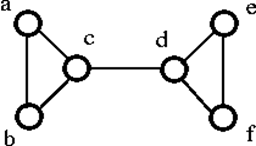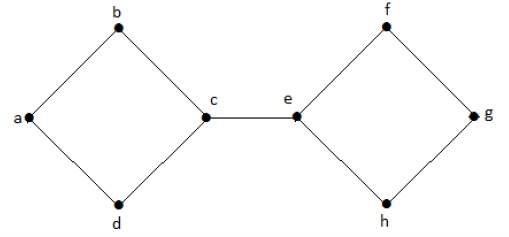Edge Connectivity is a minimum number of edges in a connected graph 'G', whose removal leaves the graph Disconnected. It is represented by λ(G).
Example:
In this fig, Edge Connectivity is 2, because from vertex 'e' if we remove edge to be and ed the graph will be disconnected into two subgraphs.
Similarly In this fig Edge Connectivity is 1.
Note: Edge Connectivity of a connected Graph 'G' can't exceed the minimum degree of Graph 'G'. λ(G)<=δ(G).
Vertex Connectivity:
Vertex Connectivity is a minimum number of vertices whose removal from connected Graph 'G' leaves the Graph disconnected. It is represented by K(G).
Example:
Let's see an example:

Here the Vertex Connectivity is 1, By removing vertex c or d the Graph becomes disconnected.
Note:
(1)If a graph has a bridge(cut edge), vertex connectivity is 1. (2)If the Graph has Vertex Connectivity 1 then it is called Seprable Graph otherwise the Graph will be called Non-Separable Graph.
Cut Edge(Bridge):
The bridge is defined as an edge whose removal from Connected Graph 'G' leaves Graph disconnected.
In the following graph, the Bridge(Cut Edge) is (c, e) which is 1. By removing it the Graph becomes Disconnected into two subgraphs.



